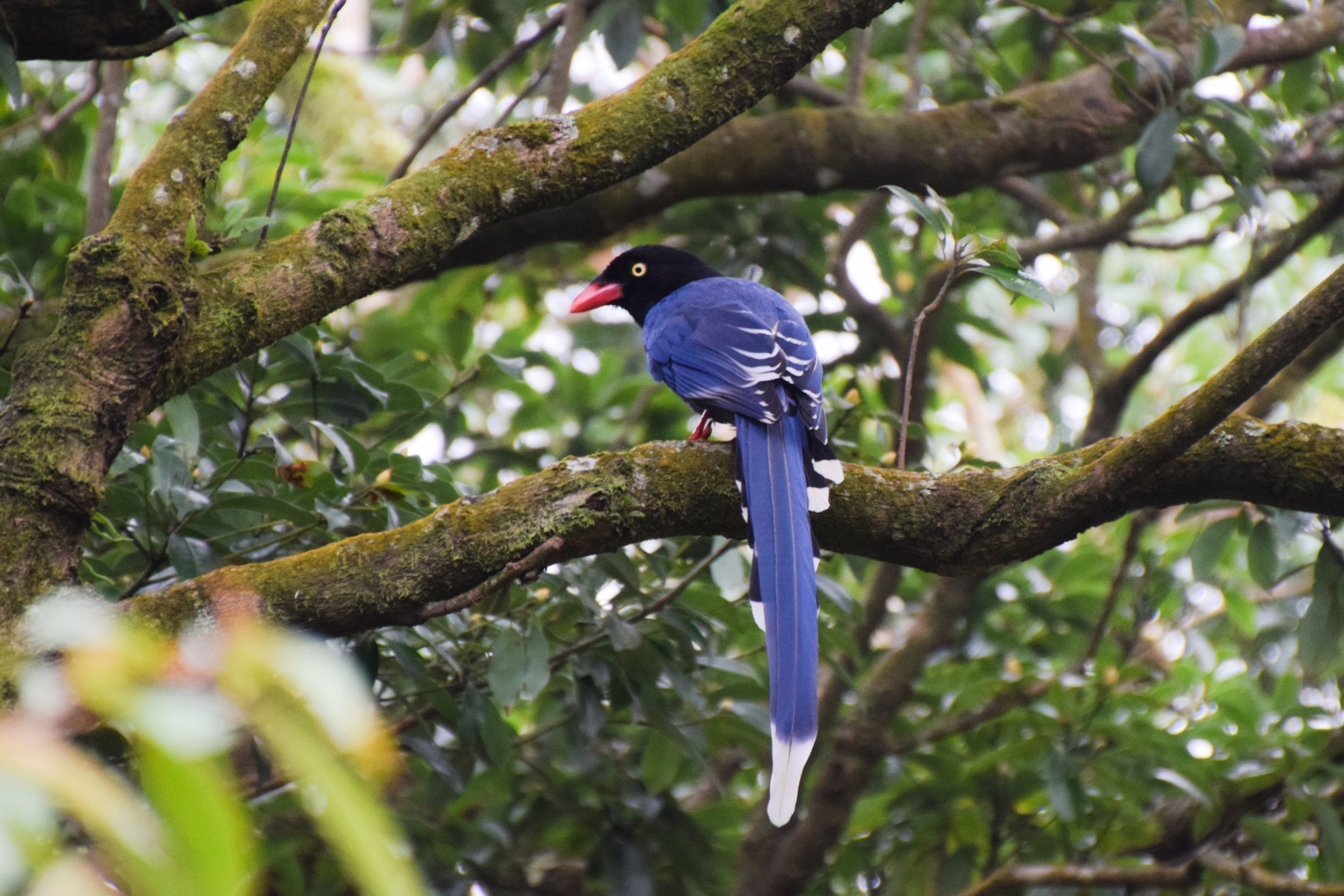Taiwan blue magpie
(Urocissa caerulea)

Description
The Taiwan blue magpie (Urocissa caerulea), also called the Taiwan magpie, Formosan blue magpie or the "long-tailed mountain lady" is a species of bird of the crow family. It is endemic to Taiwan. The Taiwan blue magpie was collected by Robert Swinhoe and described by John Gould. Swinhoe translated the magpie's Hokkien name into English, calling it the "Long-tailed Mountain-Nymph". The species is sometimes placed in the genus Cissa. It forms a superspecies with the yellow-billed blue magpie (Urocissa flavirostris) and the red-billed blue magpie (Urocissa erythroryncha). The species is monotypic. The Taiwan blue magpie is endemic to Taiwan. It lives in broadleaf forests at elevations of 300–1,200 m (980–3,940 ft). It is 63–68 cm (25–27 in) in length. The tail measures around 34–42 cm (13–17 in) in length, and the wings are 20 cm (7.9 in) long. It weighs 254–260 g (9.0–9.2 oz). The plumages of the male and female are similar. The head, neck and breast are black. The eyes are yellow, and the bill and feet are red. The rest of the plumage is mostly blue. The wings and tail feathers have white tips. The underwing-coverts are dark grey, and the flight feathers are light grey. The uppertail-coverts have black tips. The central pair of tail feathers are the longest. The other tail feathers have black bands. Chicks are greyish, with a short tail and greyish-blue eyes. Taiwan blue magpies are not very afraid of people. They can be found near human residences in the mountains or newly cultivated lands. They are gregarious and are usually found in groups of three to twelve. The birds often fly in a line, following each other. This is sometimes called "long-tailed formation". Similar to other members of the crow family, they have a raucous call which is described as a high-pitched cackling chatter, kyak-kyak-kyak-kyak. Other calls include ga-kang, ga-kang, kwee-eep and gar-suee. Taiwan blue magpies are scavengers and omnivores. Their diet includes snakes, rodents, small insects, carrion, eggs and chicks of other birds, plants, fruits, and seeds. They also feed on food waste of humans. They sometimes store leftovers on the ground and cover them with leaves for future retrieval. Sometimes they store food in the leaves or branches.
Taxonomic tree:







